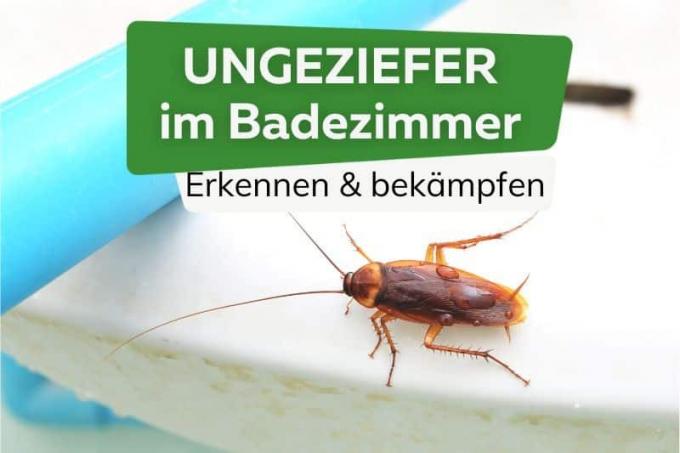
High humidity and cold temperatures make the bathroom a favorite spot for a number of crawling, uninvited guests. Read here which bugs are particularly common in the bathroom.
In a nutshell
- Bugs love moisture and darkness in the bathroom
- some species are "only" harmless pests
- ventilate regularly and reduce humidity
- Thoroughly clean the bathroom regularly
- wash textiles
Table of contents
- Abortion fly (Psychoda grisescens)
- Cockroaches (Blattodea)
- Woodlice (Porcellio scaber)
- Clothes moth (Tineola bisselliella)
- Brass beetle (Niptus hololeucus)
- Mites (Acari)
- Fur beetle (Attagenus pellio)
- Silverfish (Lepisma saccharina)
- Booklice (Psocoptera)
- frequently asked Questions
Abortion fly (Psychoda grisescens)
The toilet fly is a bug in the bathroom that appears when the toilet drains are leaking.
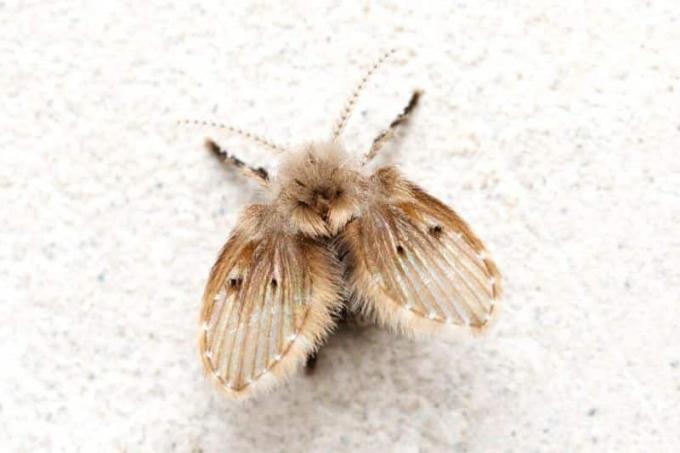
- Appearance: approx. 1.5 mm long, grey-brown ground colour, white dotted wing edges, butterfly-like
- Occurrence: in the area of the toilet, occasionally also in litter boxes in the bathroom
- Combat: toilet or Check drains for leaks, deep clean bathrooms, clean drains with a mixture of vinegar and baking soda
Cockroaches (Blattodea)
cockroaches are not necessarily perceived as vermin in the bathroom, but can feed themselves there if necessary from different packaging made of cellulose.
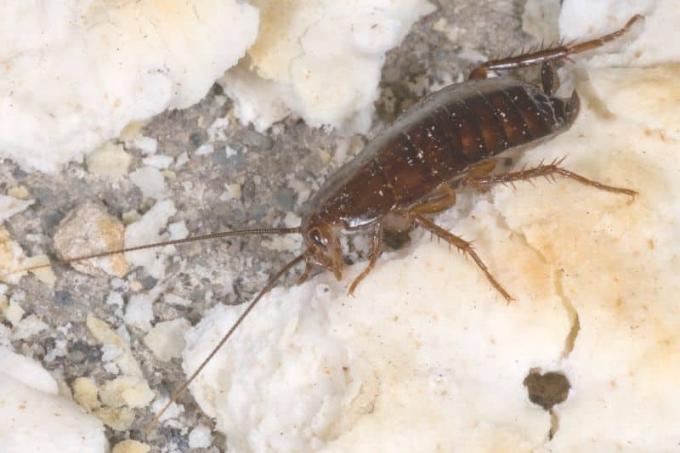
- Look: up to 7 cm long, brown ground colour, hard elytra, long antennae
- Occurrence: in dark corners of the bathroom, nocturnal, withdraw immediately when there is light
- Control: basic cleaning with hygiene cleaners, spread sugar mixed with baking soda as bait, distribute bay leaves in affected corners
A notice: Cockroaches are hygiene pests who are notifiable. If they cannot be combated by improved hygiene, you should hire a professional to combat them for health reasons.
Woodlice (Porcellio scaber)
woodlice are not only in cellars to be found, but also appear as vermin in the bathroom, where it is warm and humid.
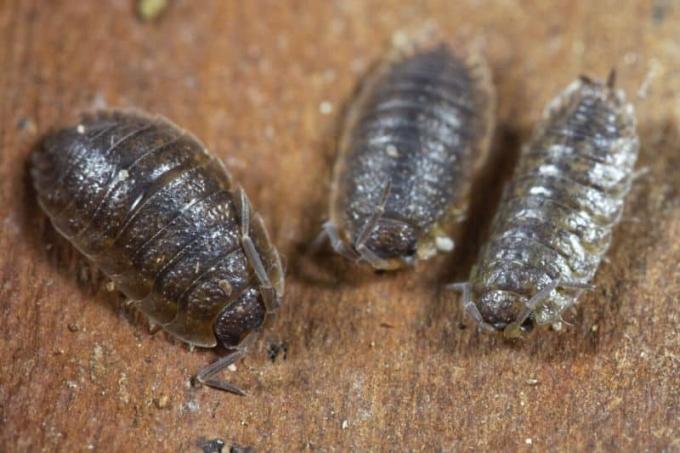
- Appearance: approx. 9 to 18 mm long, dark gray to yellowish in colour, dorsal armor divided into semi-rings
- Occurrence: in dark, damp corners of the bathroom where dead organic material collects
- Control: reduce humidity, dry damp floors, avoid accumulation of moisture on floor edges or in corners
Clothes moth (Tineola bisselliella)
In the bathroom there are textiles by clothes moths like to be attacked because they are rarely disturbed there.

- Appearance: approx. 6 to 9 mm long, light to dark gray wings, uneven flight characteristics
- Occurrence: mainly nocturnal, caterpillars in textiles containing wool
- Control: Wash textiles regularly at at least 40 °C, distribute scented sachets with lavender, use moth traps
Brass beetle (Niptus hololeucus)
The brass beetle is also a pest that only appears in the bathroom if there are textiles made of natural fibers.
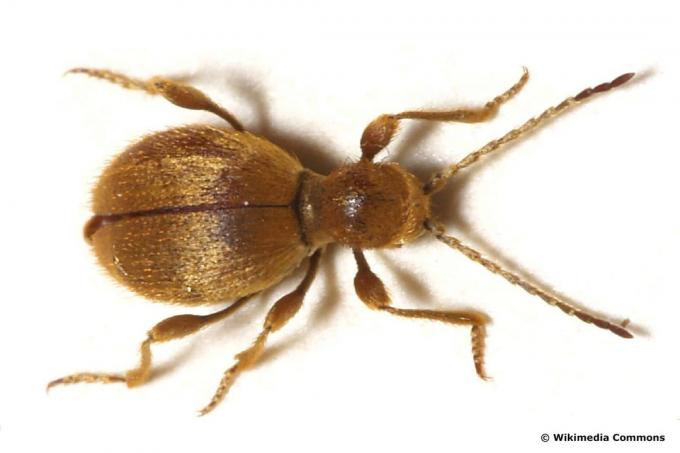
- Appearance: 2.6 to 4.6 mm long, spider-like body, dark red to red-brown ground color, golden-yellow hairs, unable to fly
- Occurrence: nocturnal, in dark corners, under cupboards
- Control: Do not store dirty laundry in the bathroom for unnecessarily long periods, keep humidity low
A notice: The brass beetle can cause allergies. It often comes into the bathroom over dirty laundry.
Mites (Acari)
Mites cannot be avoided as vermin in the bathroom, because they often feed on dead skin cells or other organic materials.
- Appearance: some are less than a millimeter tall, eight legs, physique similar to a tick, whitish to orange basic color, can usually only be seen under a microscope
- Occurrence: everywhere in the bathroom
- Control: vacuum regularly, clean surfaces, wash textiles regularly, air to reduce humidity
A notice: Mites are everywhere in the house. For this reason, general hygiene should be observed so as not to carry them from room to room.
Fur beetle (Attagenus pellio)
The fur beetle usually enters bathrooms through open windows and the larvae can easily destroy entire towels.

- Appearance: Beetle 3.5 to 6 mm long, black body with few light spots, larvae 8 to 10 mm long, yellowish to reddish in color, hairy
- Occurrence: mainly on cotton textiles
- Control: Clean the bathroom regularly, wash washable textiles regularly, clean non-washable fabrics with a steam cleaner
Silverfish (Lepisma saccharina)
are silverfish not directly a harmful vermin in the bathroom, as they only feed on dead organic material and do not actively cause damage to textiles, for example.

- Appearance: up to 11 mm long, elongated spindle-shaped body, body narrowing towards the back, upper side silvery-grey, long antennae, terminal filaments at the end of the body
- Occurrence: in warm, damp bathrooms, mainly in cracks and joints, under baseboards
- combat: Greatly reduce temperature and humidity, vacuum regularly, use halved potatoes on paper as an attractant, distribute lavender sachets
Booklice (Psocoptera)
This vermin loves rooms with high humidity, so it is particularly common in the kitchen and bathroom.
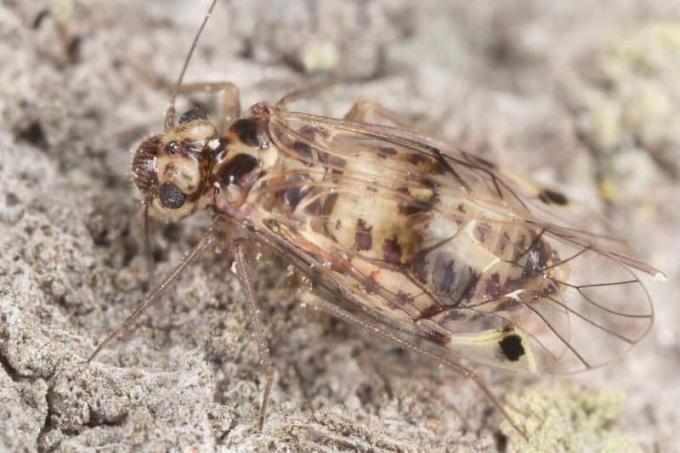
- Appearance: approx. 1.2 to 2.3 mm long, light beige coloration, long thin antennae
- Occurrence: on mold-infested surfaces
- Control: Eliminate mould, reduce humidity through regular airing, eliminate water accumulation through condensation
frequently asked Questions
Not much can be done against some species. Mites or silverfish show up every once in a while. Good hygiene is the best prevention. This also means that the corners of the bathrooms are regularly vacuumed and mopped. In addition, you should ventilate the room immediately if the humidity is high, so that vermin are not attracted in the first place.
Sometimes bugs in the bathroom are not due to a lack of hygiene, but to the insulation material used, for example. Insects can also nest there, which then get into the bathroom through small cracks. In such cases, you should have it checked to see whether the insulation has been permanently damaged by the vermin.
No, the vermin will not be driven away by permanent lighting. The insects retreat to darker corners at most and they always find a shady and light-protected place somewhere.
